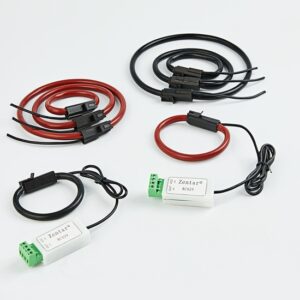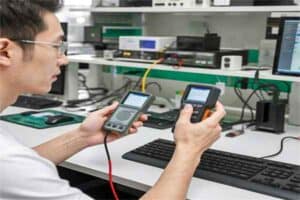Choosing the High Precision Current Transformer: Understanding Linearity and Accuracy Errors
Understanding the differences between linearity error and accuracy error is essential for ensuring precise and reliable current measurements. By considering factors such as waveform distortion, measurement range, and budget, you can make an informed decision about the appropriate current transformer for your needs. Accurate current measurement is critical for applications ranging from metering and relaying to power quality monitoring, making the choice of CT a pivotal aspect of electrical system design.
Selecting the right current transformer (CT) is essential for achieving precise and reliable current measurements. Two critical factors to consider are linearity error and accuracy error. While they are related, these errors have different implications for CT performance. Let’s explore the differences between linearity error and accuracy error in current transformers.
What is Linearity Error?
Definition
Linearity error is the deviation between the actual measured curve and the ideal straight line.
Explanation
When a current transformer operates, its output signal may not perfectly follow a linear relationship with the input current. The actual response curve might deviate from the ideal straight line.
Quantification
Linearity error is typically expressed as a percentage relative to the maximum value. It represents the maximum difference between the measured points and the linear regression line.
Factors
Factors contributing to linearity error include magnetic saturation, hysteresis, and other non-ideal characteristics of the transformer.
Importance
Linearity is crucial for accurate measurements, especially when the current varies across a wide range.
What is Accuracy Error?
Definition: Accuracy error refers to the maximum difference between the actual value and the indicated value at the output of the sensor (current transformer).
Influencing Factors: Accuracy is affected by various factors such as temperature changes, humidity variations, power supply fluctuations, and frequency changes.
Basic Error Limit: Accuracy is determined by the sensor’s basic error limit, representing the inherent precision of the measurement device.
Overall Performance: Achieving high accuracy ensures reliable and consistent measurements, even under varying conditions.
Comparing Linearity Error and Accuracy Error
| Feature | Linearity Error | Accuracy Error |
|---|---|---|
| Definition | Deviation from the ideal linear relationship | Overall deviation from the true value |
| Significance | High at different current levels | Affects overall measurement reliability |
| Expression | Percentage of full-scale output | Class designation |
| Example | CT with 1% linearity error | CT with class 0.5 designation |
Choosing the Right CT for Your Application
Both linearity error and accuracy error are important factors when selecting a current transformer. Here’s how they influence CT selection:
Waveform Distortion: If the current waveform is expected to be distorted, a CT with low linearity error is crucial to minimize measurement errors.
Measurement Range: The required measurement range will influence the CT’s accuracy requirements. For example, a wider measurement range may necessitate a higher accuracy class.
Cost: CTs with lower linearity error and higher accuracy class typically come at a higher cost.
Application Needs: The choice between linearity error and accuracy error depends on the specific application. If high accuracy is crucial, especially at high current levels, a CT with low linearity error is essential. However, if the application requires only moderate accuracy and cost is a significant factor, a CT with higher linearity error but lower accuracy class may be sufficient.
By focusing on these factors, you can select the most suitable current transformer, optimizing performance and reliability in your specific application.





